
Wetenschap
Precisie op picoschaal door ultradunne film piëzo-elektriciteit
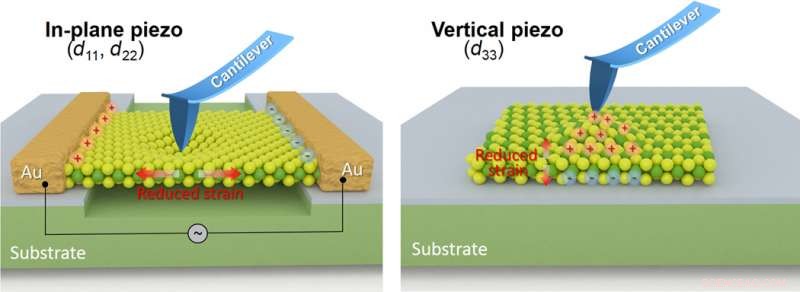
Fig. 1. Schematische weergave van lokale karakterisering van piëzo-elektriciteit in het vlak en verticale piëzo-elektriciteit. In-plane piëzo-elektriciteit (piëzo) ( NS 11 , NS 22 ) van ultradunne materialen is het vlakke elektromechanische koppelgedrag, waarbij de toegepaste spanning en geproduceerde piëzo-elektrische potentiaal zich in het vlak van het blootgestelde roostervlak bevinden. Verticale piëzo-elektriciteit ( NS 33 ) focus op elektromechanische interactie vond plaats in de verticale as, die loodrecht op het oppervlak van materialen staat. De zeer nauwkeurige vervormingsactuator kan worden geïmplementeerd met behulp van nauwkeurige positionering van het materiaaloppervlak door verticale inverse piëzo-elektriciteit. Krediet:X. Wang, X. Hij, H. Zhu, L. Zon, W.Fu, X. Wang, LC Hoong, H. Wang, Q.Zeng, W. Zhao, J. Wei, Z.Jin, Z. Shen, J. Liu, T. Zhang, Z. Liu, Subatomaire vervorming aangedreven door verticale piëzo-elektriciteit van ultradunne CdS-films. Wetenschap. Adv. 2, e1600209 (2016). Copyright © 2016 De auteurs, sommige rechten voorbehouden; exclusieve licentiehouder American Association for the Advancement of Science. Gedistribueerd onder een Creative Commons Naamsvermelding Niet-Commercieel Licentie 4.0 (CC BY-NC). DOI:10.1126/sciadv.1600209.
Piëzo-elektriciteit ( oftewel het piëzo-elektrisch effect) komt voor in bepaalde materialen – kristallen (met name kwarts), wat keramiek, bot, DNA, en een aantal eiwitten - wanneer de toepassing van mechanische stress of trillingen elektrische lading of wisselstroom (AC) spanning genereert, respectievelijk. (Omgekeerd, piëzo-elektrische materialen kunnen trillen wanneer er wisselspanning op wordt toegepast.) Het piëzo-elektrische effect heeft een aanzienlijk aantal toepassingen, inclusief geluidsproductie en detectie, generatie van hoge spanningen en elektronische frequenties, beeldtechnologieën met atomaire resolutie (bijv. scanning tunneling en atomic force microscopie), en actuatoren voor zeer nauwkeurige positionering van objecten op nanoschaal - de laatste is cruciaal voor fundamenteel onderzoek en industriële toepassingen. Dat gezegd hebbende, positionering op subatomaire schaal vormt nog steeds een aantal uitdagingen. Onlangs, echter, onderzoekers van de Nanyang Technological University, Singapore, Chinese Wetenschapsacademie, Suzhou, en Duke University, Durham demonstreerde verticale piëzo-elektriciteit op atomaire schaal (drie tot vijf ruimteroosters) met behulp van ultradunne cadmiumsulfide (CdS) -films. De onderzoekers bepaalden een verticale piëzo-elektrische coëfficiënt ( NS 33 ) drie keer zoveel als bij bulk-CdS-gebruik ter plaatse scanning Kelvin-krachtmicroscopie en enkele en dubbele ac-resonantietracking piëzo-elektrische krachtmicroscopie, waardoor ze concludeerden dat hun bevindingen een aantal cruciale rollen spelen bij het ontwerp van sensoren van de volgende generatie en micro-elektromechanische apparaten.
Prof. Zheng Liu besprak het artikel dat hij, Dr. Ting Zhang en hun collega's publiceerden in: wetenschappelijke vooruitgang , het beschrijven van een reeks uitdagingen waarmee ze werden geconfronteerd, te beginnen met het gebruik van chemische dampafzetting om 2 ~ 3 nm cadmiumsulfide (CdS) dunne films te synthetiseren. "De verticale piëzo-elektriciteit, of NS 33 , is de belangrijkste parameter in piëzo-elektrische materialen voor de fabricage van actuatoren die worden gebruikt om objecten met extreme nauwkeurigheid te positioneren - tot op atomaire schaal in een breed scala aan geavanceerde apparatuur zoals atoomkrachtmicroscopie en scanning tunneling microscopie, " vertelt Liu Phys.org . "Bovendien, high-performance ultradunne piëzo-elektrische materialen zijn cruciaal voor de constructie van ultrahoge resolutie en flexibele elektromechanisch gekoppelde apparaten."
Voorafgaand aan deze studie, Liu wijst erop, slechts enkele studies rapporteerden de synthese van atomaire dunne piëzo-elektrische materialen door een natchemische methode, voorbeelden hiervan zijn CdS en cadmiumselenide (CdSe) nanobloedplaatjes. "Het is een grote uitdaging om hoogwaardige en atoomdunne piëzo-elektrische materialen te produceren, " voegt hij eraan toe. "In dit onderzoek, de belangrijkste uitdaging bij het synthetiseren van ultradunne piëzo-elektrische CdS-films via chemische dampafzetting" (of CVD) "ligt in de selectie van voorlopers en het optimaliseren van de reactieparameters, zoals groeitemperatuur en tijd."
De wetenschappers werden vervolgens geconfronteerd met demonstreren NS 33 verticale piëzo-elektriciteit op atomaire schaal met behulp van ultradunne dunne cadmiumsulfide-films. "Wanneer de dikte van materialen het nanoschaalniveau bereikt, "Lou legt uit, "Het is erg moeilijk om het piëzo-elektrische effect te verifiëren en de waarden ervan te bepalen vanwege het koppelingseffect van het substraat - en oppervlaktegeometrieën kunnen ook de metingen bij atomaire limieten beïnvloeden." Bijvoorbeeld, hij illustreert, de oppervlakteruwheid van het monster bereikt tientallen picometers, wat dezelfde schaal is als de verticale elektromechanische respons voor materialen.
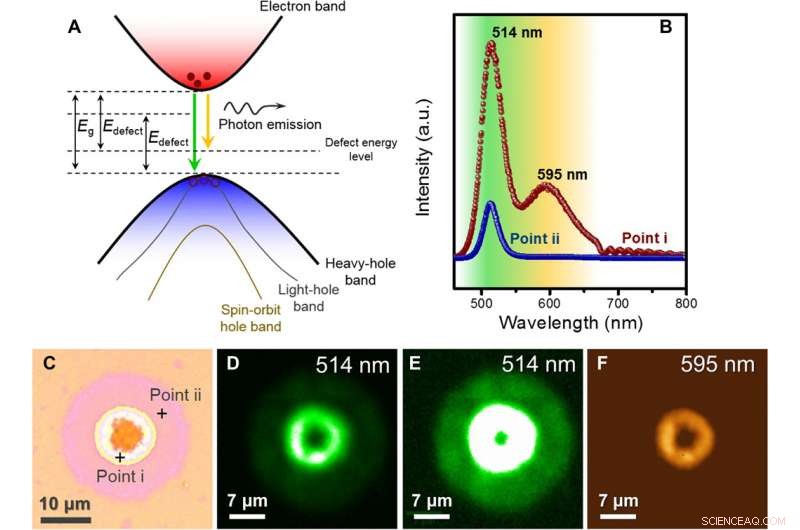
Fig. 3. Spectroscopische karakterisering van CdS dunne film. (A) Energie ( E ) bandstructuur in de buurt van het Γ-punt van de Brillouin-zone, laat het fotonenemissieproces zien. (B en C) PL-spectrum van CdS dunne film van punten i en ii gemarkeerd in (C) met plustekens, met sterke bandrandemissie (506 nm) van ultradunne CdS-film en defectgerelateerde emissie (595 nm). (C) Optisch beeld van CdS dunne film met een afgerond microdeeltje in het midden. a.u., willekeurige eenheden. (D en E) PL-mapping bij een emissie van 514 nm met een andere schaalbalk, demonstreren hoge uniformiteit en homogeniteit van CdS dunne films op het buitengebied. (F) PL-mapping bij de 595-nm-emissie, wat aangeeft dat de defectgerelateerde emissie alleen optreedt bij het dikkere CdS-microdeeltje. Krediet:X. Wang, X. Hij, H. Zhu, L. Zon, W.Fu, X. Wang, LC Hoong, H. Wang, Q.Zeng, W. Zhao, J. Wei, Z.Jin, Z. Shen, J. Liu, T. Zhang, Z. Liu, Subatomaire vervorming aangedreven door verticale piëzo-elektriciteit van ultradunne CdS-films. Wetenschap. Adv. 2, e1600209 (2016). Copyright © 2016 De auteurs, sommige rechten voorbehouden; exclusieve licentiehouder American Association for the Advancement of Science. Gedistribueerd onder een Creative Commons Attribution NonCommercial License 4.0 (CC BY-NC). DOI:10.1126/sciadv.1600209.
Ten slotte - en doet denken aan de uitdaging bij het demonstreren NS 33 verticale piëzo-elektriciteit op atomaire schaal met behulp van dunne CdS-films - de onderzoekers moesten de verticale piëzo-elektrische coëfficiënt van de CdS-film bepalen met ter plaatse scanning Kelvin-krachtmicroscopie (SKFM) en enkele en dubbele AC-resonantie-tracking piëzo-elektrische krachtmicroscopie (DART-PFM). "De kwaliteit van ultradunne piëzo-elektrische CdS is de sleutel tot het verkrijgen van een betrouwbare verticale piëzo-elektrische coëfficiënt." Liu merkt op. "Sommige karakteriseringstools zoals Raman- en fotoluminescentiespectroscopieën kunnen ons helpen het CdS-monster te identificeren en de hoge kwaliteit ervan te bevestigen. vanwege de geometrische trillingen van de CdS-monsters, de karakterisering van de atoomkrachtmicroscopie moet zorgvuldig worden uitgevoerd om ervoor te zorgen dat onze conclusies solide zijn." Dit vereiste dat de onderzoekers veel SKFM- en DART-PFM-monsters moesten onderzoeken om tot een solide conclusie te komen over verticaal piëzo-elektrisch gedrag in ultradunne CdS-films.
Liu comments that addressing these challenges required innovative techniques. "For the first time, we successfully synthesized high-quality atomic thin CdS films using CVD, and we demonstrated vertical piezoelectricity of these films at the atomic scale of 3~5 space lattices" (a space, or crystal, lattice being a periodically repeating two- or three-dimensional array of points or particles) "and observed the vertical piezoelectric domains. More importantly, " Liu continues, "our work shows an enhanced vertical piezoelectricity in CdS ultrathin films at a level three times larger than the CdS bulk counterpart, as well as higher than most of traditional piezoelectric materials." These results imply non-trivial piezoelectric behavior at atomic limits for a certain class of materials – which has not yet been well explored – and inspires the search for two-dimensional free-standing layered piezoelectric materials that are only one atom thick.
Liu points out that their findings shed light on the design of next-generation sensors, actuators and microelectromechanical devices, in that piezoelectric materials are the most important component for such devices. specifiek, he says that their findings provide the opportunity for next-generation sensors and microelectromechanical devices in three ways:
- Flexibility :Ultrathin piezoelectric material materials are naturally like two-dimensional materials in being flexible, allowing them to be conformably used for more complicated electromechanical devices.
- Miniaturization :Ultrathin piezoelectric material materials are a perfect candidate for the fabrication of reduced size, highly integrated devices, especially for mobile phone and wearable devices.
- Inspiratie :The study's results will inspire the development of other ultrathin piezoelectric materials, especially two-dimensional piezoelectric materials.
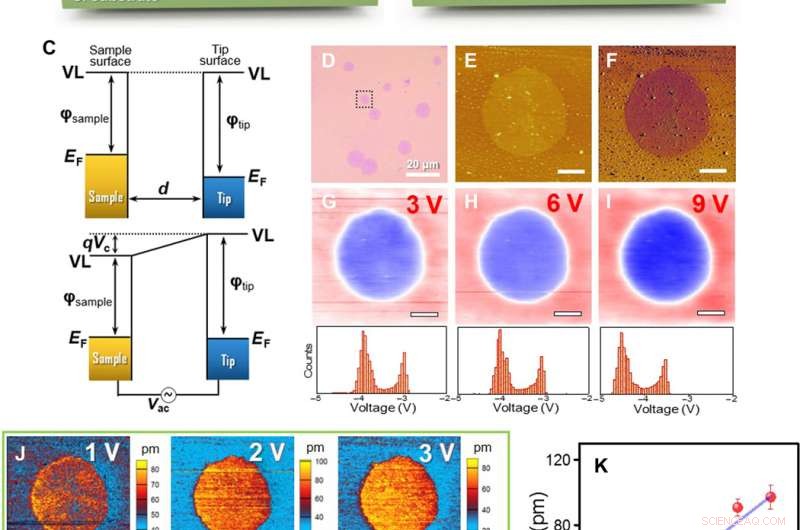
Fig. 4. Noncontact SKFM and standard contact PFM investigation for CdS thin film. (A and B) Schematic illustration of SKFM (A) and PFM (B) measurements. (C) Band diagram of tip and sample when they are electrically separated (top graph) and electrically contacted (bottom graph). NS , distance; VL, vacuum levels; Q , electronic charge; V C , contact potential difference. (D) Optical image of CdS thin films. (E and F) Topography (E) and phase (F) images observed by SKFM mode for the single CdS thin film marked in (D). (G to I) Corresponding potential mappings with tip voltages of 3, 6, and 9 V, respectievelijk. Insets show histograms of the surface potential distributions. The CdS ultrathin film has a higher positive voltage (~0.9 V) than the substrate, demonstrating that a large amount of charges are accumulated at a CdS thin film after contact PFM scanning. (J) Amplitude images observed by contact PFM technology with tip voltages from 1 to 6 V, showing remarkable inverse piezoelectricity. (K) Average amplitude variations versus applied voltages calculated from (J). Error bars indicate 1 SD. Scale bars, 2 μm (E to J). The linearly fitted line shows that the measured piezoelectric coefficient NS eff is ~16.4 pm·V −1 , whereas the vertical piezoelectric coefficient NS 33 is ~32.8 pm·V −1 . Credit:X. Wang, X. He, H. Zhu, L. Sun, W. Fu, X. Wang, L. C. Hoong, H. Wang, Q. Zeng, W. Zhao, J. Wei, Z. Jin, Z. Shen, J. Liu, T. Zhang, Z. Liu, Subatomic deformation driven by vertical piezoelectricity from CdS ultrathin films. Wetenschap. Adv. 2, e1600209 (2016). Copyright © 2016 The Authors, some rights reserved; exclusive licensee American Association for the Advancement of Science. Distributed under a Creative Commons Attribution NonCommercial License 4.0 (CC BY-NC). DOI:10.1126/sciadv.1600209.
Liu illustrates these points by listing potential examples of such devices – for example, atomically thin piezoelectric devices – and their applications. "Bijvoorbeeld, using CdS ultrathin films, the most accurate probe or stage ever fabricated may be achievable, allowing researchers and engineers to manipulate atoms or position tips in atomic force, scanning electron and transmission electron microscopy. Met andere woorden, CdS ultrathin films will extend our capability to see and manipulate our world in an extreme way." Of more importance, hij voegt toe, such ultrathin piezoelectric devices can be integrated into equipment like autocollimators and Michelson interferometers used in, bijvoorbeeld, cold atom studies, the verification of the gravitational inverse square law at short range, and even the detection of gravitational waves.
The study also reports the in situ measurement of the ultrathin CdS film vertical piezoelectric coefficient NS 33 , determining the film coefficient to be approximately three times larger than that of bulk CdS. "This value is pretty big for atomically thin materials, " Liu explains. "It means that we can get a large voltage change when small pressure or deformation is applied. This makes the material a great candidate constructing sensitive and ultrathin mechanical sensors."
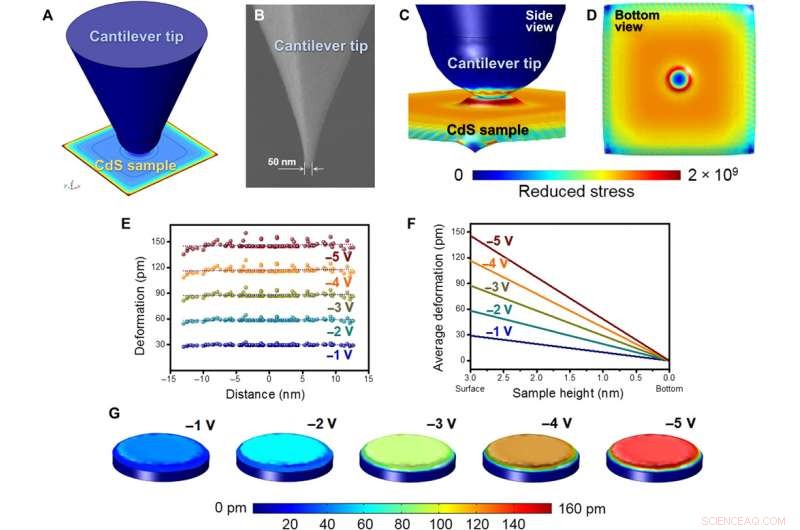
Fig. 6. Simulation of vertical piezoelectricity and subatomic deformation actuator. (A) Three-dimensional image of potential drop on CdS film. (B) Scanning electron microscopy image of a conductive tip for PFM characterization. (C and D) Bottom and side views of stress distribution on CdS film. (E to G) Simulation for subatomic deformation actuator. Different potentials were applied to surface deformation curves (E), mappings (G), and vertical deformation (F) of CdS thin films. Credit:X. Wang, X. He, H. Zhu, L. Sun, W. Fu, X. Wang, L. C. Hoong, H. Wang, Q. Zeng, W. Zhao, J. Wei, Z. Jin, Z. Shen, J. Liu, T. Zhang, Z. Liu, Subatomic deformation driven by vertical piezoelectricity from CdS ultrathin films. Wetenschap. Adv. 2, e1600209 (2016). Copyright © 2016 The Authors, some rights reserved; exclusive licensee American Association for the Advancement of Science. Distributed under a Creative Commons Attribution NonCommercial License 4.0 (CC BY-NC). DOI:10.1126/sciadv.1600209.
The researchers concluded that contact piezoresponse force microscopy (PFM) – which uses a conductive tip to apply a highly localized electric field that allows imaging and manipulation of piezoelectric ferroelectric materials – could significantly change the surface potential of a CdS ultrathin film by applying stress to its surface. "Typisch, applying mechanical stress to a piezoelectric material will generate electric charge that accumulates at the surface of the material, which is how we identify the piezoelectric materials, " Liu tells Phys.org . "We therefore believe that this results from piezoelectric polarizations giving rise to a large piezoelectric potential, in turn leading to a remarkable spatial separation of electrons and holes." In this case, electrons generated by the piezoelectric effect will be trapped into the silicon dioxide (SiO 2) dielectric layers, while the holes will be trapped inside the crystal boundary of the CdS films.
The scientists state that their work may pave a way to the synthesis of ultrathin lattice scale nanomaterials using CVD method, which is a low-cost method for producing high quality samples. In aanvulling, Liu notes, the materials provided by their study will enable the high-integrated and multi-functional devices by simply coating or transferring the film to the device. "For actuator applications, our work will promote next generation actuators with extreme resolution for their potential use in characterization tools such as ultra-high resolution microscopy; for atom manipulation and fabrication; or potentially for the detection of ultra-low deformation in, bijvoorbeeld, cold atom studies, verification of the gravitational inverse square law at short range, and even the detection of gravitational waves."
Vooruit gaan, Liu says, the scientists will determine the relationship between the vertical piezoelectric coefficient NS 33 and the thickness of CdS at atomic scales. "Well also synthesize other piezoelectric, ferroelectric and layered piezoelectric/ferroelectric ultrathin materials, and explore their electromechanical properties." Based on this material and micro/nano-manufacture technology, the researchers hope to design and fabricate next-generation actuators for accurate positioning of minute objects, such as nanoparticles at subatomic scales, using their novel materials.
In aanvulling, the large vertical piezoelectric coefficient NS 33 makes this material promising to construction of ultrathin and sensitive pressure sensors for detecting miniscule forces. If the low detection limit of sensor reaches to nanoscale levels, the device could monitor single biological cell migration.
"Our study will inspire material scientists to hunt for other non-trivial ultrathin or layered piezoelectric or ferroelectric materials, " Liu tells Phys.org . "Engineers can employ our CdS ultrathin films to design and fabricate novel microelectromechanical systems, " or MEMS, "and nanoelectromechanical systems, " or NEMS, "with high-integration and multi-functionalities, and may benefit when developing cutting-edge scientific instruments. Verder, " he concludes, "novel and flexible consumer electronic devices can be developed based on our study."
© 2016 Phys.org
 Berekening van het ionisatiepotentieel
Berekening van het ionisatiepotentieel Nieuw materiaal voor katholieten en anolieten in organische redoxflow-batterijen
Nieuw materiaal voor katholieten en anolieten in organische redoxflow-batterijen Onderzoekers creëren slimme oppervlakken om bloedvattransplantaten beter te laten breien, veiliger
Onderzoekers creëren slimme oppervlakken om bloedvattransplantaten beter te laten breien, veiliger Uitvinding van vormveranderend textiel dat alleen wordt aangedreven door lichaamswarmte
Uitvinding van vormveranderend textiel dat alleen wordt aangedreven door lichaamswarmte Computermodellen bieden nieuw begrip van sikkelcelziekte
Computermodellen bieden nieuw begrip van sikkelcelziekte
Hoofdlijnen
- Ontdekking van een mechanisme om de richting van collectieve celmigratie te bepalen
- Voordelen en nadelen van klonen
- Is vissen met elektriciteit minder destructief dan de zeebodem opgraven met boomkorren?
- Wat zijn de functies van glasplaat & dekglaasjes?
- Het verschil tussen prokaryotische en eukaryotische genexpressie
- Genetische ontdekking nog een hulpmiddel in de strijd tegen tarweplagen
- Genoom van flespompoen geeft inzicht in evolutionaire geschiedenis, relaties van komkommerachtigen
- Drone-foto's bieden snellere, goedkopere gegevens over de belangrijkste Antarctische soorten
- Wat zijn de monomeren van triglyceriden?
- sneller, goedkopere methode voor DNA-sequencing ontwikkeld
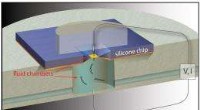
- Onderzoekers ontdekken waarom niet-containers voor medicijnafgifte vaak mislukken
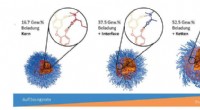
- Inverse ontwerpsoftware automatiseert het ontwerpproces voor optische, nanofotonische structuren
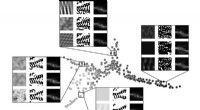
- Onderzoek toont aan dat celverstoringssysteem medische toepassingen kan hebben

- Single-agent fototherapiesysteem biedt een belangrijk nieuw hulpmiddel om kanker te bestrijden
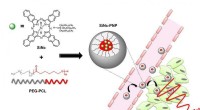
 Amazon-magnaat Bezos vliegt in internethandelstorm in India
Amazon-magnaat Bezos vliegt in internethandelstorm in India Het grootste probleem met virtual reality? Het is bijna net zo alledaags als het echte leven
Het grootste probleem met virtual reality? Het is bijna net zo alledaags als het echte leven Hoe kaliumchloride bereiden
Hoe kaliumchloride bereiden  Met metaaloxide doordrenkte membranen kunnen een energiezuinig alternatief bieden voor chemische scheidingen
Met metaaloxide doordrenkte membranen kunnen een energiezuinig alternatief bieden voor chemische scheidingen Hoe is gebotteld water een bijdrager voor opwarming van de aarde?
Hoe is gebotteld water een bijdrager voor opwarming van de aarde?  Onderzoek biedt nieuwe inzichten in N95s COVID-19-filterefficiëntie
Onderzoek biedt nieuwe inzichten in N95s COVID-19-filterefficiëntie Associatie tussen magnetische systemen en bepaalde toestanden van hersenactiviteit
Associatie tussen magnetische systemen en bepaalde toestanden van hersenactiviteit Islamofobie vertegenwoordigt een vorm van racisme vermengd met culturele onverdraagzaamheid
Islamofobie vertegenwoordigt een vorm van racisme vermengd met culturele onverdraagzaamheid
- Elektronica
- Biologie
- Zonsverduistering
- Wiskunde
- French | Italian | Portuguese | German | Dutch | Danish | Spanish | Swedish | Norway |

-
Wetenschap © https://nl.scienceaq.com

